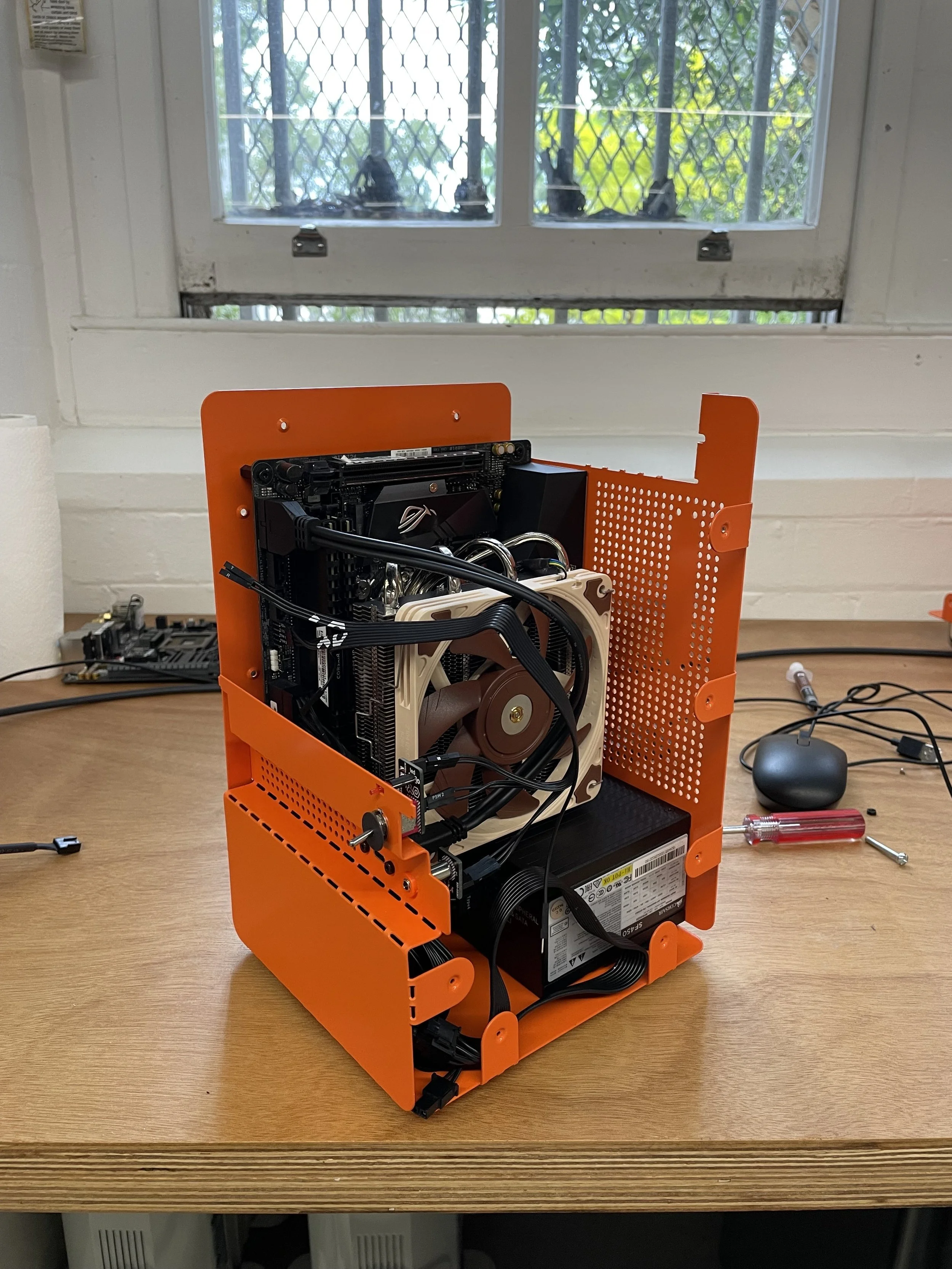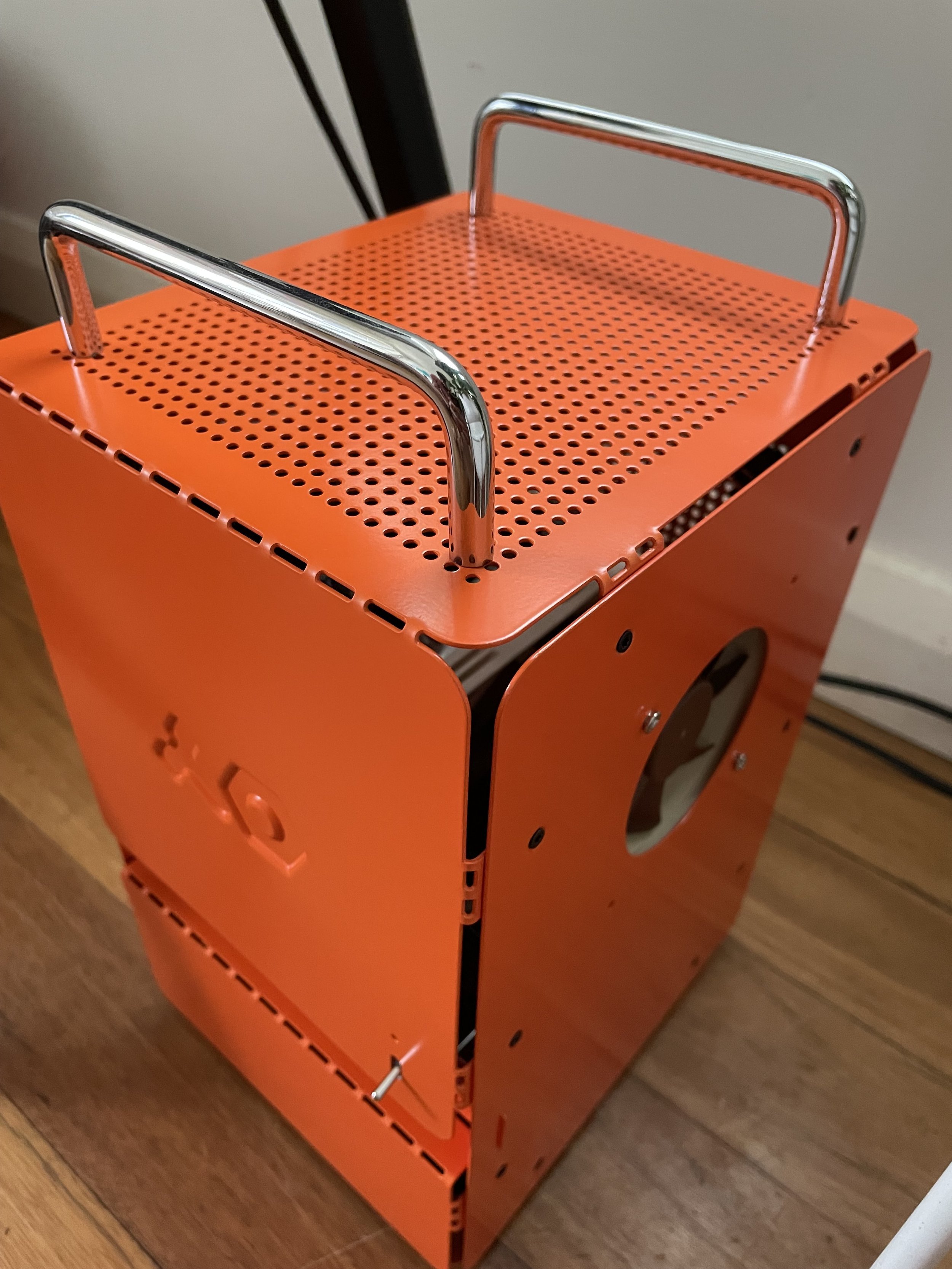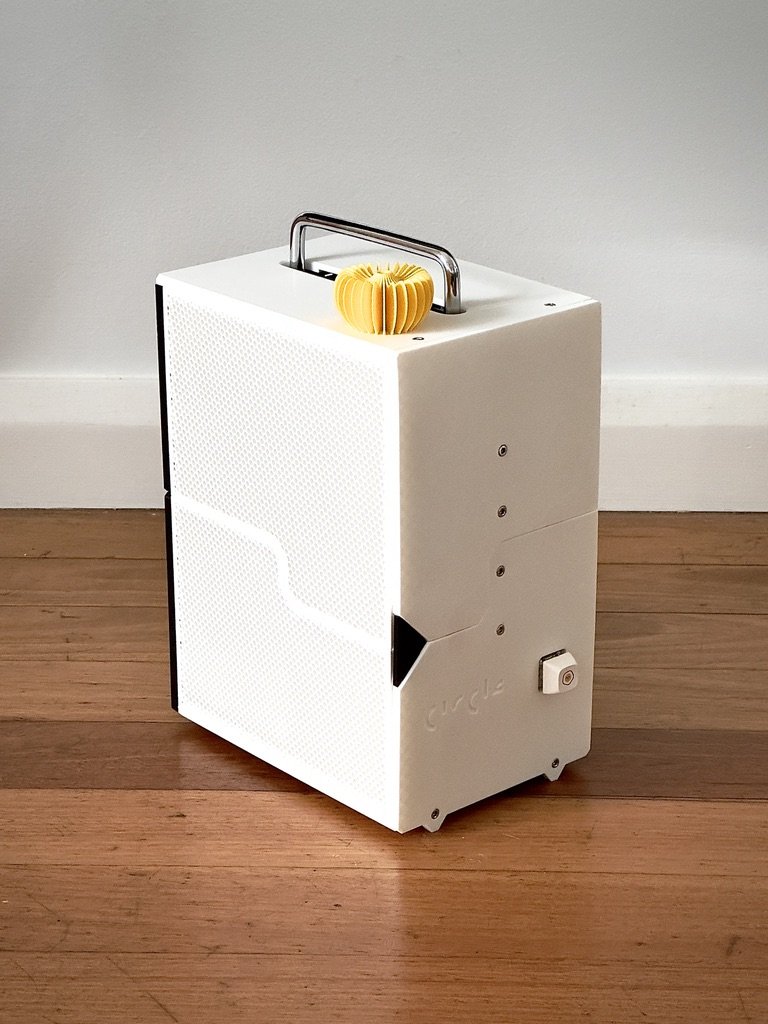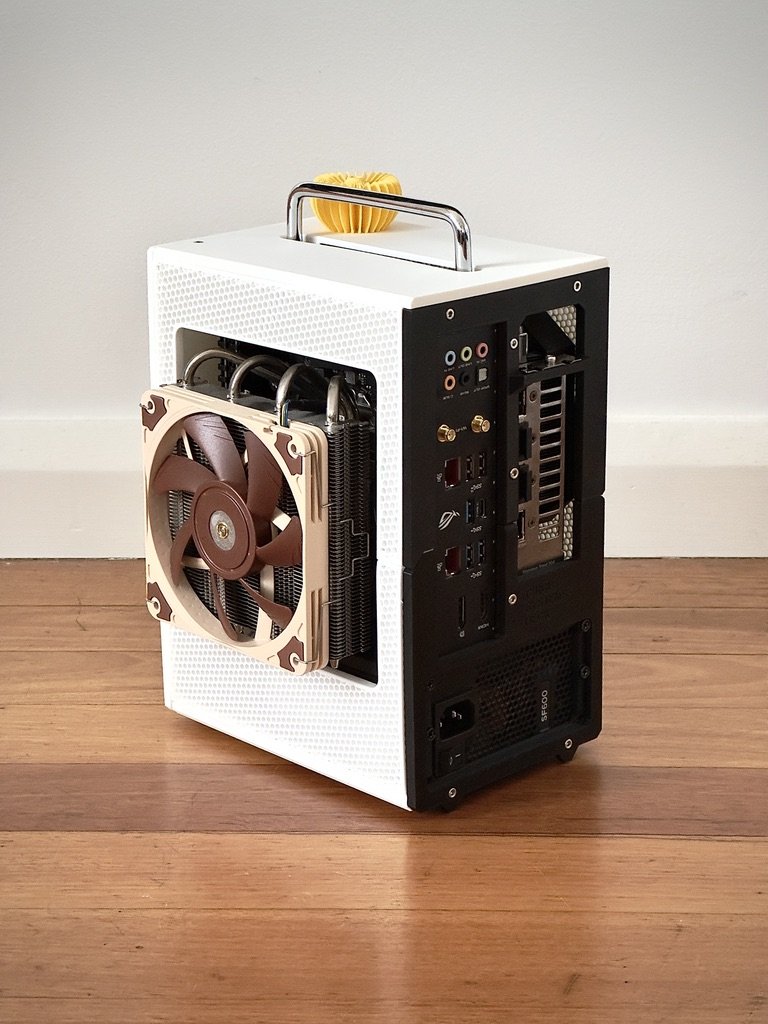Teenage Engineering computer-1 Review
I can’t quite tell if the TE Computer-1 is work of genius or a flat-out terrible computer case. I’d argue It’s both.
From the perspective of Teenage Engineering’s singular, unapologetic design aesthetic, it’s a spirited, beautiful, unique mini-itx case with some exceptionally cool design details.
From the perspective of a computer case, it is a naive, restrictive and in some ways, just plain bad. I’m uniquely qualified to say this because I designed the Circle Pro, a mini-itx case that also focused on the aesthetic experience to the detriment of functionality and part compatibility.
Exhibit A: the Computer-1 only supports graphic cards up to 180mm in length. That restricts it to essentially one mainstream model the MSI AERO ITX (the ASUS Phoenix series cards are the right length, but too wide). The Circle Pro supported card lengths up to 213mm long, which at least supported the ZOTAC range of mini-itx cards. From cold hard experience, this is a deal-breaker for 90% of the ITX case buying market.
ZOTAC mini-itx cards do not fit.
So the decision to support only 180mm length cards is all at once naive, bold and esoteric. I understand why they did it though. To reduce complexity they opted to not include a riser card. And if you do this, there are only a couple of layouts that make sense. They chose the tower form factor and the overall dimensions being more critical to the whole experience than GPU compatibility. I get it. It’s uncompromising for a purpose.
Kind of like the brilliant decision to make the whole case out of incredibly thin and pliable powder coated aluminium. The flat-pack design is truly awesome, and must be making them an incredible margin on a RRP of $195USD. Each panel must cost less than $1USD to produce. I estimate the entire product to cost less than $20USD to make. Not so with the machined blocks of solid aluminium on the Circle Pro.
The Circle Pro - made from CNC machined aluminium and glass panels.
Despite the flimsy panels, somehow the case attains decent rigidity once all the insubstantial self-tapping screws have chewed threads into every mounting hole. This part of the design is extremely well done. To account for the lax tolerances of hand bent panels, there are large, generous gaps between the panels around the whole case. That way your eye won’t notice tolerance errors in the gaps between the panels.
Panel gaps as wide as an ocean.
Other great details: the Mac Pro-esque polished silver handles, the de-bossed TE logo on the front panel and the black screws on the RAL orange powder-coat really give the C-1 life.
Unfortunately, the case is a nightmare to build in. You have to assemble it in an extremely specific order (similar to the Circle Pro), and the case doesn’t come with the right screws to mount a chassis fan on the side panel. I tried all standard fan screws and none fit. I had to manually tap the holes to be larger and then forced in self-tapping fan screws. This is a really poorly thought out element of the design.
Another poorly thought out design choice is how to access any of the components once the case is assembled. If you want to change out the GPU, it’s unnecessarily complicated to take out. Want to access the NVME card on the back of the mobo? You can’t. You can take off the back panel, but it is also the motherboard support, so the whole thing basically falls apart.
Oh, also - to remove any of the panels requires removing at least 8 screws, an incredibly tedious process. I recommend anyone working with this case to have an electric screwdriver on had. It will save you a lot of time and heartache.
There’s a lot to say and feel about this case, but the bottom line is that I wasn’t able to use it as my workstation because I couldn’t find an available in-stock graphics card that would fit. So I’m using it as an HTPC with integrated graphics. Pretty lame.
No GPU for me.
I don’t know how to give it a rating out of 10. As a design object I give it a 9/10. As a case I give it a 3/10. On balance it’s probably a 6/10. Do I recommend it? Not really. Do I still kind of love it? Yes. That’s the magic of unadulterated, opinionated design.
UPDATE
PS. Instead of using the TE Computer-1, I designed and 3D printed my own HTPC case that is much better for my needs. It fits a mini-itx Asus Phoenix series card, whilst retaining the same footprint and form factor.
My custom designed 'Circle Deck' - mini-ITX HTPC gaming case









